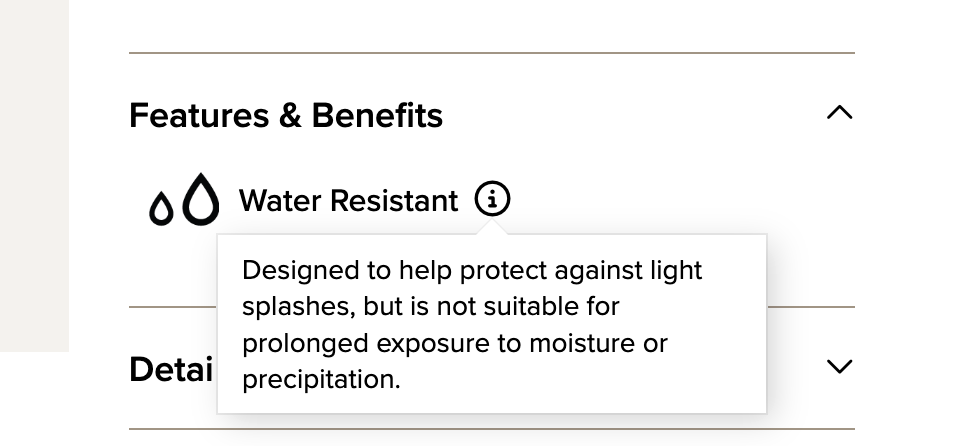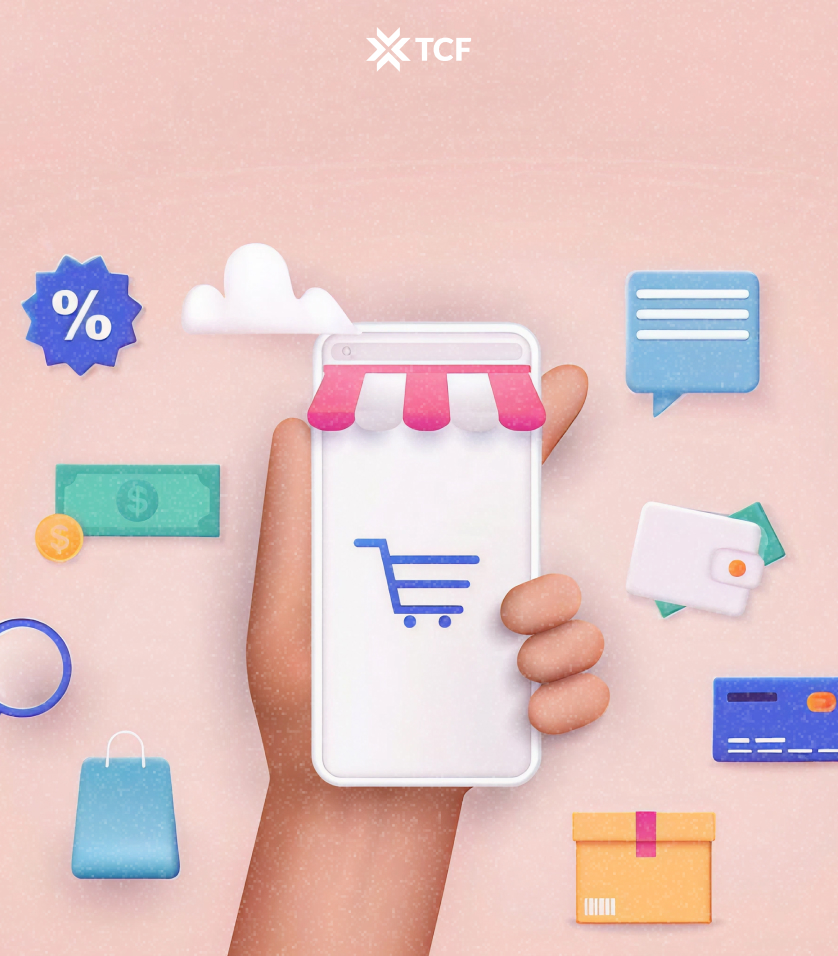Writing product descriptions sounds simple until you sit down to do it. You’ve got the specs, the photos, the features lined up. But turning all that into copy that actually sells is where most stores lose momentum.
A great product description bridges logic and emotion. It gives shoppers a reason to care, helps them imagine the product in their lives, and quietly builds the confidence to click “Add to Cart.” A weak one does the opposite: it makes people scroll away, compare prices, or question the quality before they’ve even looked at reviews.
And now that tools like ChatGPT Shopping can recommend products directly to buyers, the way you write descriptions matters even more. Your words help both shoppers and AI understand what makes your product worth choosing.
This guide will walk you through what separates high-converting descriptions from forgettable ones, how to write copy that sells without sounding forced, and how to use AI tools to speed up the process without losing your brand voice.
By the end, you’ll have a clear framework you can plug into your writing routine today, so your next product page turns browsers into buyers.
[[cta5]]
What Good vs. Bad Product Descriptions Look Like
The difference between a strong product description and a weak one shows up fast. You can feel it in the first sentence. One makes you imagine using the product. The other feels like you’re reading a spec sheet.
Let’s look at a simple example.
Product: Wireless Noise-Canceling Headphones
Weak Description: “Wireless Bluetooth headphones with noise-canceling technology and 30-hour battery life. Includes charging cable.”
Strong Description: “Block out the world and dive into your music. These wireless headphones cancel background noise, stay comfortable for hours, and keep playing for a full day on one charge.”
The weak version lists facts but gives no reason to care. It could belong to any pair of headphones on any site. The strong version still includes the essentials (wireless, noise-canceling, long battery life) but turns them into benefits. It answers what the shopper actually wants to know: Will these make my life better?
A few quick tells that your description needs work:
- It starts with specs instead of a hook.
- It reads like a copy-paste from the supplier’s page.
- It uses filler adjectives like “excellent,” “high quality,” “innovative” that don’t prove anything.
- It doesn’t sound like your brand or speak directly to your audience.
Good descriptions feel effortless because they connect dots between features and feelings. They make the reader think, “Yeah, that’s exactly what I need.”
In the next section, we’ll break down the structure that makes that happen, the framework behind every product description that actually converts.
How to Structure Product Descriptions
Every product page has the same job: catch attention, explain value, and move someone from interest to action. The best ones do it in a few short paragraphs that sound human.
Here’s the structure that makes that happen.
1. Start with a hook
The opening line decides if people keep reading. Skip the specs and start with a moment, feeling, or problem your product solves.
- “Tired of your phone dying halfway through the day?”
- “Meet the mug that keeps your coffee hot for hours, not minutes.”
Hooks like these make the shopper picture their own life and see your product as the fix.
2. Lead with benefits, not features
Features tell what something is. Benefits tell why it matters.
Instead of “made from stainless steel,” say “built to last for years without losing its shine.”
Instead of “includes adjustable straps,” say “fits perfectly, no slipping or digging.”

Readers care about what they’ll feel, save, or gain, so write from that angle first.
3. Layer in the features and proof
Once you’ve sold the benefit, ground it with facts. Include specs, materials, measurements, or compatibility details, but keep them scannable.

Use short paragraphs or bullet points. Numbers are good here, they make claims believable. Think of this part as reassurance: you’ve sparked desire, now you’re backing it up.
4. Handle objections before they show up
Ask what might make someone hesitate: Is it size, price, durability, delivery time? Answer those inside your copy so shoppers don’t have to leave the page to find out.

Example: “Machine washable for easy care,” or “Delivered in eco-friendly packaging within 3-5 days.”
5. Add trust and social proof
Quotes from real customers, review counts, or guarantees can turn curiosity into commitment.
Even one line like “Over 1,000 verified five-star reviews” builds confidence faster than any adjective.
If it fits your brand, mention certifications or materials (organic cotton, dermatologist-tested, etc.) to reinforce quality.
6. End with a clear call to action
The close should nudge the reader to act, not think about it.
Use direct, encouraging language: “Add to Cart,” “Get Yours Today,” “Start Your Trial.”

If your stock or offer is limited, mention it, but only if it’s real. Shoppers spot fake urgency from a mile away.
Each section of this framework keeps readers moving down the page: attention, desire, proof, and action. It’s simple, but when done right, it turns static product pages into quiet salespeople working for you 24/7.
This kind of writing also ties directly into ecommerce personalization, where product pages adapt to each shopper’s interests and browsing behavior. Personalized descriptions make shoppers feel seen, which increases engagement and conversion.
SEO for Product Descriptions: Improve Discoverability and Rankings
Good copy pulls people in. Smart SEO makes sure they find it in the first place. A product description has to do both: sound natural to humans and make sense to search engines. Together, they form the foundation of product page optimization, where persuasive writing and technical setup work hand in hand to turn traffic into sales.
Search engines don’t reward over-optimized text anymore. Keyword stuffing, duplicate supplier copy, and long paragraphs packed with synonyms do more harm than good. Forget tricking” the algorithm. The goal is to clearly describe the product in the same language real shoppers use when they search.
Start with a short keyword list for each product: one main keyword and two or three related phrases.
For example, if you sell insulated water bottles, your main keyword might be “stainless steel water bottle,” and your supporting terms could include “reusable water bottle” and “keeps drinks cold.” Sprinkle them naturally in the title, first paragraph, and subheadings. Don’t force them.
A few practical moves that help descriptions rank and read well:
- Write unique copy for every product. Google favors originality, and customers notice when pages repeat the same phrases.
- Add alt text to images describing what’s shown (e.g., “matte black stainless steel water bottle 20oz”). This helps accessibility and SEO.
- Use meta descriptions that summarize the benefit, not just the feature. Something like “Stay hydrated with a durable stainless steel bottle that keeps drinks cold for 24 hours.”
- If your site supports it, include structured data or product schema (price, availability, reviews). It gives search engines richer context and can earn you product-rich snippets in results.
In the next section, we’ll look at how AI tools can make this entire process faster from drafting first versions to optimizing for search without sacrificing tone or accuracy.
How ChatGPT Shopping Changes Product Descriptions Forever
As AI search becomes the new storefront, product descriptions now have to do more than convert shoppers on your site. They also need to teach ChatGPT what you sell so your products can appear in its built-in shopping results.
OpenAI’s new “Buy Now” feature lets users shop directly inside ChatGPT. When someone types “best noise-canceling headphones under $200,” ChatGPT now also recommends specific products with images, pricing, and direct checkout links, besides just listing advice.
That means your copy and structure influence how well AI understands and recommends your product.

To make sure your products appear in these results:
- Use structured data. Add clear schema markup for product names, descriptions, prices, and reviews so AI can interpret them correctly.
- Write like a buyer’s prompt. Use natural phrasing that mirrors what people would actually type into ChatGPT, like “eco-friendly yoga mat for hot yoga” or “long-lasting red lipstick.”
- Keep consistency across feeds. Your product feed, title tags, and on-page copy should match. Conflicting data confuses AI and lowers your visibility.
- Reinforce your value proposition. Explain what your product is and why it’s better than alternatives, right at the top of the page. ChatGPT uses that context to summarize and rank results.
- Build external trust signals. Reviews, ratings, and mentions across the web help ChatGPT verify your brand’s credibility and choose your product over competitors.
This shift doesn’t replace SEO at all. It builds on it.
Your product descriptions now work double duty: attracting human readers and helping AI systems understand why your product belongs in their recommendations. That’s where AI-assisted writing workflows can help you scale faster without losing control of your tone.
AI-Assisted Writing Workflows for Product Descriptions
AI can make writing faster, but only if you guide it. Treat it like an assistant that needs clear instructions, not a ghostwriter that magically understands your brand. The quality of what comes out depends entirely on what you feed in.
Start by giving context. When prompting AI tools like ChatGPT, Gemini, or Copy.ai, include your product type, audience, tone, and what makes it different. Don’t say “Write a product description for a T-shirt.” Say:
“Write a 120-word product description for a unisex cotton T-shirt made from organic materials. The tone should be friendly, casual, and confident. Emphasize comfort, sustainability, and fit.”
That one extra line of direction saves you from robotic, generic text.
Here’s a simple workflow that keeps AI writing under control:
- Brief it. Give clear details, your tone, and what emotion you want readers to feel.
- Generate. Ask for 2-3 variations. Compare them side by side.
- Refine. Pick the best base version and rewrite the weak spots manually.
- Fact-check. AI sometimes invents features or specs. Always cross-check your own product data.
- Polish. Adjust phrasing to fit your brand’s rhythm and make sure it flows naturally.
You can also use AI to generate bullet points, alternative intros, or meta descriptions for SEO. The trick is to let it handle the first 60%, then finish the rest yourself.
AI should save time, not flatten your voice. When it starts to sound too polished or vague, bring back the human edge: specific details, sensory words, and tone that feels alive.
Scaling Product Descriptions for Catalogs and Marketplaces
Writing one strong product description is easy. Writing a hundred that all sound natural, accurate, and on-brand? That’s the real challenge.
When your store has dozens of SKUs or you manage multiple marketplaces, the goal shifts from writing beautifully to writing efficiently without losing quality.
Here’s how to scale the process without turning your copy into a copy-paste mess.
Build Templates That Still Feel Human
Start by designing a flexible base template. Think of it as a framework.
Example:
[Product name] is designed for [specific use case or benefit], made with [key material or feature] that [solves X problem or enhances Y experience]. Perfect for [ideal audience or situation].
This kind of structure helps you keep descriptions consistent while allowing enough space for personality and tone.
Use interchangeable variables for each category (fit, color, scent, function, result) so you can fill them quickly without rewriting from scratch.
Know the Marketplace Rules
Every platform has its quirks.
- Amazon limits title and bullet length, penalizing overuse of promotional language.
- Etsy rewards originality and emotional language but hates keyword stuffing.
- Shopify gives you freedom but depends heavily on SEO and alt text structure.
If you’re using the same base copy across platforms, create modular sections: an emotional hook for Etsy, a spec-driven version for Amazon, and a keyword-optimized paragraph for Shopify. This helps you stay compliant while maintaining your brand’s tone everywhere.
Automate Localization Without Losing Nuance
AI makes multilingual scaling much easier but only if you supervise it.
Instead of direct translation, prompt AI to rewrite descriptions for each market’s cultural tone.
“Translate this product description for the French market, adjusting idioms and phrasing to sound natural for local shoppers.”
Then have a native speaker or editor review the first few batches before rolling it out in bulk. You’ll maintain authenticity and avoid awkward, machine-translated phrasing that breaks trust.
Testing and Iteration
Conversion optimization sits at the heart of ecommerce CRO. Even the best copy can be improved once real customers interact with it. A product description is a living part of your sales funnel. Testing helps you see what actually converts instead of what sounds good on paper.
Tiny copy changes can shift buyer behavior in big ways. The headline that made sense to you might not resonate with shoppers. The benefit you thought was obvious might be buried too deep in the text. Testing helps you uncover what drives clicks, trust, and add-to-cart decisions.
Key Metrics to Watch
Focus on metrics that tell you what’s working:
- Conversion rate (CVR): How many visitors buy after reading the description.
- Click-through rate (CTR): How many people click to view more (from search results, ads, or collections).
- Dwell time: How long they stay on the page.
- Bounce rate: If people leave immediately, the copy or layout may not connect.
How to A/B Test Product Descriptions
A/B testing is simple when you break it down. Create two versions of a description, change only one element, and compare results over time. You can test:
- Tone: casual vs. formal.
- CTA placement: at the end vs. mid-paragraph.
- Headline or hook: leading with emotion vs. with specs.
- Benefit order: which feature comes first.
Run the test long enough to gather meaningful data with at least a few hundred visitors per version. Most ecommerce platforms (Shopify, BigCommerce) or analytics tools (Google Optimize, Convert, VWO) make it easy to track conversions per variant.
Iterate, Don’t Rewrite
Once you find what works, document it. Create a quick copy style sheet noting tone, length, and structure that perform best. When you update or add new products, start from what’s proven instead of reinventing the wheel.
The more you test, the faster your team will recognize what sells: phrasing patterns, sensory words, emotional hooks.
Common Product Description Mistakes to Avoid
Once you’ve mastered structure, tone, and SEO, the problems shift. You stop making rookie errors and start making invisible ones, the kind that don’t look wrong until performance dips. These are the silent killers of great product copy.
- Writing for Algorithms Instead of People
When copy starts sounding like it was written for search engines, you’ve already lost the human. Over-optimized phrasing, awkward repetition, and keyword stacking might look good in audits but break the flow of real reading.
The rule: your descriptions should sound natural read out loud. If you can spot the keyword, customers can too.
- Overusing Power Words
“Ultimate.” “Revolutionary.” “Game-changing.” They once worked because they were rare. Now they make your copy sound like every other ad.
Replace drama with specifics. “Water-resistant for up to 12 hours” beats “redefines durability” every time.
- Forgetting Context
A product description lives inside a bigger story. When tone or promise clashes with the rest of your page (pricing, visuals, or reviews), trust cracks.
Before finalizing the copy, read it inside the actual layout. Does it match the photography, colors, and pricing tier? A $12 item written like a luxury product confuses shoppers faster than any typo.
- Trying to Please Everyone
Broad, neutral copy feels safe, but it never sells strongly. The best product pages take a side: they talk to a specific buyer and let others scroll by.
If your copy could fit any brand in your category, it’s too soft. Add perspective, talk the way your target customer talks.
- Forgetting to Re-Evaluate Over Time
Copy that worked last year might feel outdated today. Phrases, aesthetics, and especially humor age quickly online. Brands that never revisit descriptions slowly sound stuck in time.
Audit high-traffic pages quarterly. If it feels old when you read it, it is.
Conclusion
Great product copy connects with the reader. It turns simple details into a story that feels personal and convincing. Each line builds confidence and makes buying feel easy.
AI speeds up the process when used with direction and judgment. The strongest descriptions combine human insight with smart tools. Clear structure, sensory language, and proof create copy that sells without force.
As AI-driven shopping grows, from search engines to tools like ChatGPT Shopping, well-written descriptions now shape how both people and platforms see your brand.
Start with one product. Apply the framework, polish the tone, and track the results. Every edit sharpens your voice and strengthens your brand.
Your words shape how customers see your product. Write them with care, and every page will convert with purpose.
[[cta5]]


.jpg)



.png)


.png)


.jpg)

.jpg)